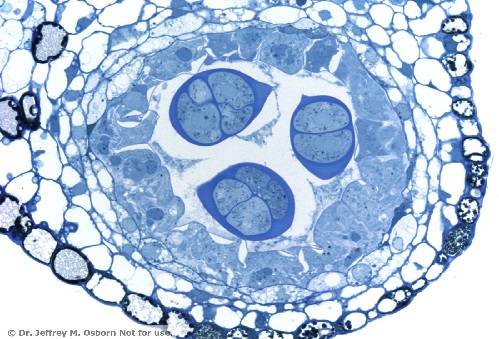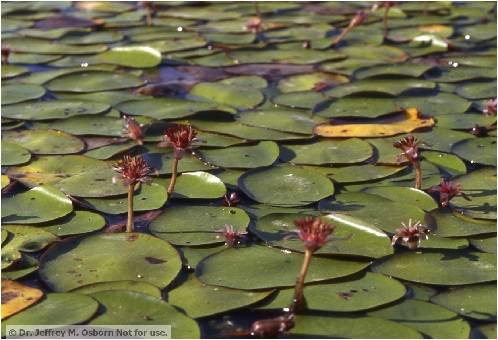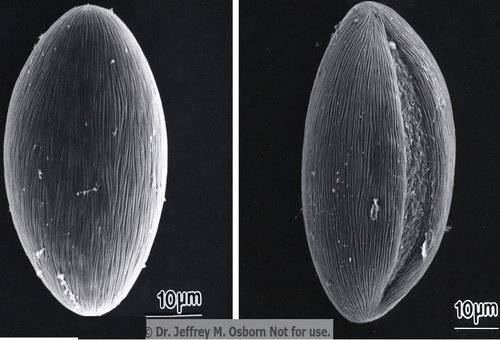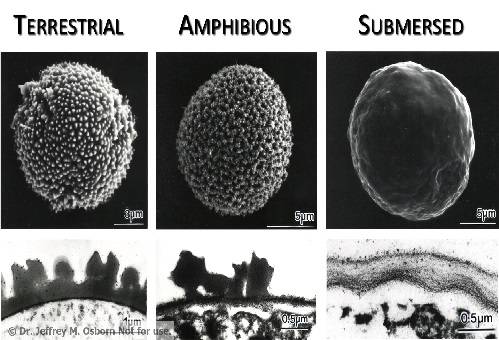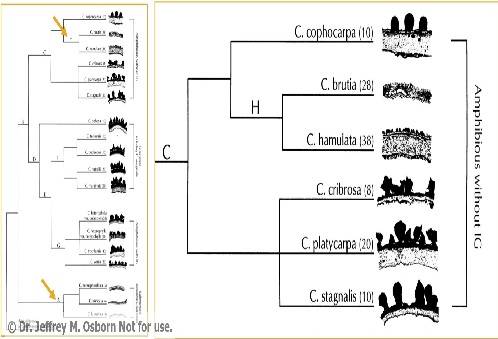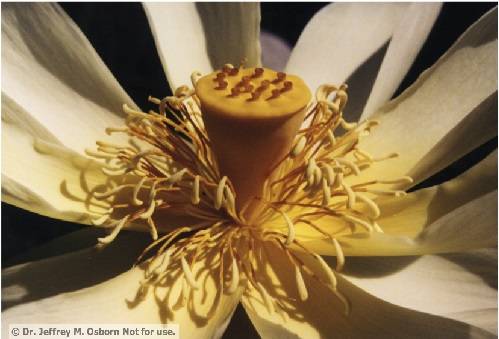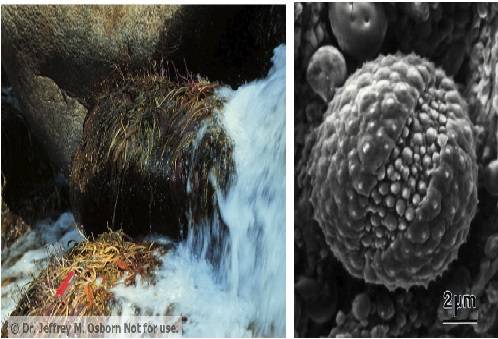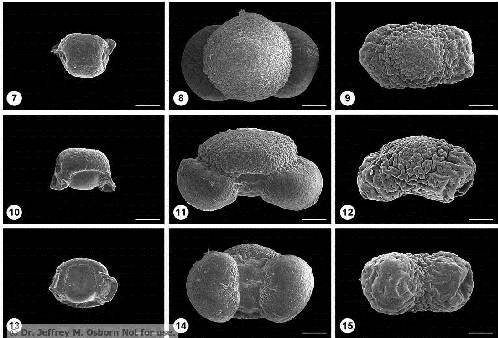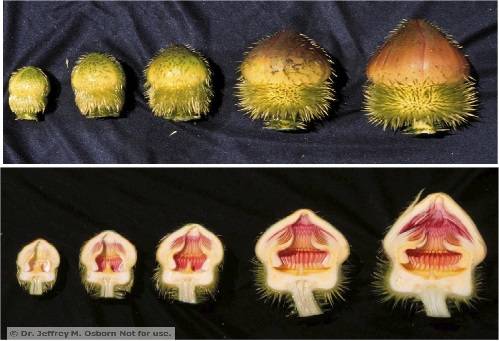Project Topics / Abstracts:
“Pollen Morphology of Two Enigmatic Fossil Gymnosperms”
Although some seed plant groups, such as conifers, have a long geologic history and a rich fossil record, a number of extinct gymnosperm groups remain poorly understood. This research has used light and electron microscopy to study pollen morphology of two enigmatic Mesozoic gymnosperms. Fossils of Piroconites were collected from the Early Jurassic of Germany and have been suggested to be related to the modern order Gnetales. Reproductive organs of Piroconites consist of leaf-like microsporophylls bearing clusters of numerous synangia. The second set of fossils studied include pollen organs collected from the Upper Triassic Allan Hills locality of Antarctica. Although these fossils have yet to be named, they appear to be members of the extinct seed fern order Peltaspermales. These fossils consist of branched microsporophylls, each bearing terminal whorls of 8-12 pollen sacs. The new pollen data will provide important characters for assessing the biology and evolutionary relationships of these plants.
“Pollen Ontogeny in the Giant Water Lily Victoria (Nymphaeaceae, Nymphaeales).”
An endemic of South America, Victoria contains two species, Victoria amazonica and Victoria cruziana, as well as several hybrids. Victoria is one of eight genera that comprise the Nymphaeales, or water lilies. The Nymphaeales are widely regarded to be among the most ancient lineages of flowering plants, as recent phylogenetic studies have consistently indicated that either Amborella or Amborella plus Nymphaeales is the sister group to the remaining angiosperms. Studies of pollen development generate important clues to evolutionary relationships; however, little is known about these characters in Victoria. This study used light, scanning electron, and transmission electron microscopy to investigate pollen development in V. amazonica, V. cruziana, and ‘Longwood’ hybrid. The objective was to comparatively document ontogenetic changes in the pollen during the major stages of development, including the sporogenous, microspore mother cell, tetrad, free microspore, and mature stages. Events including the deposition of a microspore mother cell coat, a callose ‘special’ wall, a primexine, and the sporoderm layers will be discussed. The majority of exine deposition, including formation of thin columellae, a thick tectum, and a thick foot layer, occurs during the tetrad stage. The endexine lamellae and intine develop during the free microspore and early grain stages. While mature pollen grains of V. amazonica and V. cruziana are fused into permanent tetrads, variation in tetrad configuration, as well as the formation of polyads, occur in ‘Longwood’ hybrid. Significantly, although permanent tetrads characterize the genus, the microspores are separated from each other by well-defined callose septa during the tetrad stage. These septa dissociate during the late tetrad stage, and the tecta of adjacent microspores fuse prior to dissociation of the outer callose envelope. The primary characters of anther ontogeny discussed will include the number and size of anther wall layers, changes in tapetum morphology, and timing of tapetum dissociation.
Publications:
- Taylor, M. L., P. J. Hudson, J. M. Rigg, J. N. Strandquist, J. S. Green, T. C. Thiemann, and J. M. Osborn. 2012. Tapetum structure and ontogeny in Victoria (Nymphaeaceae). Grana 51: 107-118. Article (PDF)
- Taylor, M. L., P. J. Hudson, J. M. Rigg, J. N. Strandquist, J. S. Green, T. C. Thiemann, and J. M. Osborn. 2013. Pollen ontogeny in Victoria (Nymphaeales). International Journal of Plant Sciences 174: 1259-1276. (Including color cover of journal issue for November/December 2013).Article (PDF)
Presentations:
2002
- Truman Undergraduate Research Symposium (Kirksville, MO)
2004



